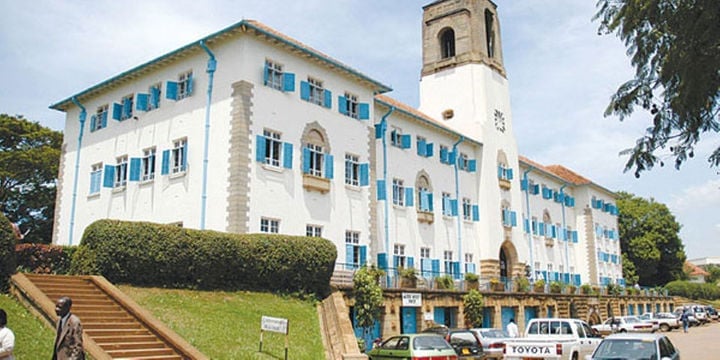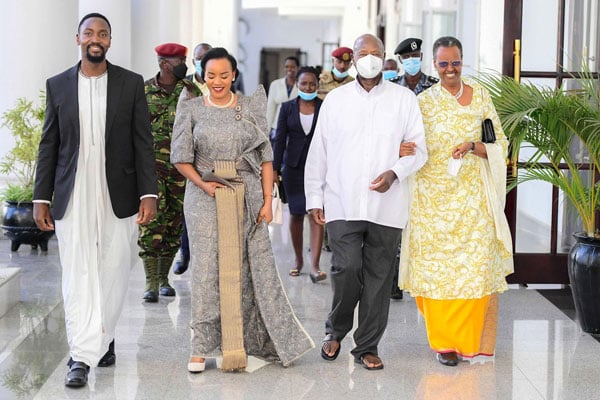Prime
What’s behind Mak’s poor show?

Makerere University Vice Chancellor Prof Barnabas Nawangwe
What you need to know:
- Makerere University’s top brass has blamed the three consecutive declines in global university rankings on staffing deficits. In this explainer, Joseph Burite tries to establish what really is ailing Uganda’s oldest university.
What are the QS World University Rankings?
Highly reputed, they include nearly 1,500 institutions from around the world. Quacquarelli Symonds (QS), a UK-based agency, uses a QS ranking that has the backing of the IREG Observatory on Academic Ranking and Excellence. The IREG Observatory, as it is widely known, has since 2009 operated as a non-profit organisation.
So how is Makerere University faring in the latest rankings?
The current standings have Uganda’s oldest and most prestigious university down in the echelons between 1,201 and 1,400. This is a poorer showing compared to the 1001 to 1,200 placement obtained in 2022. A year earlier, Makerere University was comfortably sitting among the top 1,001 universities in the world.
What explains the poor showing?
Dr Cyprian Misinde, the director of quality assurance at Makerere University, told Saturday Monitor in a phone interview that staffing deficits have landed a sledgehammer blow.
He said: “Given our numbers and the positions, which are not filled—actually in almost every unit, you will find either less than 50 percent or 50 percent of the positions are filled. This affects that ratio.”
He added: “Because we are a big university, we need more but the staff is limited due to funding. There is a limit to which the government can fund and that limits the number of staff.”
What metrics do the QS World University Rankings consider?
Half a dozen of them are used to “effectively evaluate university performance.” One of the metrics considered is the faculty-student ratio. This considers staffing sufficiency, an indicator where Makerere manages to score a dismal 3.7 percent.
Academic reputation is also considered with the score that is weighted at 40 percent derived from a survey where academics world over are asked to give their informed view on which institutions excel in the disciplines that they are familiar with. Of the 40 percent, Makerere scored just 9.4 percent.
The rankings also measure employer reputation as global employers are asked to give which institutions, in their experience, supply the best graduates into their workplaces. Here, the Ugandan entity scores 6.6 percent against a weighted mark of 10 percent.
What are the other metrics?
The other criterion is citations per faculty which, weighted at 20 percent, sees Makerere score 4.6 percent.
In the international faculty ratio and international students’ ratio, which aim to assess diversity and international attractiveness to students, Makerere obtains 11.4 percent and 9.2 percent respectively against 100 percent combined weighting of the two indicators.
More significantly, Makerere scored 53.1 percent in International Research Network, which looks at research collaboration capabilities while hitting 94.9 percent in employment outcomes indicator which assesses employability of graduates. Yet, as it stands, this is Makerere’s worst show in the rankings where it peaked at the 701st position in 2015, 2016 and 2017. This was before taking a declining turn in 2018 when the university ranked 1,000th and maintaining virtually the same position through to 2020.
How are the other top universities in East Africa faring?
Makerere is not the only university in the region to be visited by this trend. Its peer, Kenya’s University of Nairobi, has stagnated in the 1,000-1,200th position range for the last two years, while Tanzania’s University of Dar es Salaam has no current data available on the rankings since 2016 when it stood at 701st globally.
So is it all doom and gloom?
No. Separately, a ranking where the same UK agency assesses capability to teach certain subjects sees Makerere excelling in the discipline of development studies after emerging 33rd globally. It marks consistent progress from 39th in 2022 and 45th in 2021. In this same subject ranking, the university stands among the 201-250 best entities in teaching agriculture and forestry, having improved from 251-300 in 2022. Although Makerere is hitherto considered a regional powerhouse in medical education and training, it has lagged in the 301-350th positions in teaching medicine for the last four years.
So what is ailing Makerere University?
“It could be the challenge we are currently getting in the country related to research because Makerere University like any other university they have not been engaging in a lot of research as one of their core mandates even though Makerere has some funding,” Mr Twesigye John Ntamuhira, who chairs the House committee on education and sports, told Saturday Monitor, adding, “Secondly, they could be issues related to retention of professors that they need to have in the university as per the requirements of National Council of Higher Education.”
So what next?
At Makerere, Mr Misinde said faculty student ratios will likely improve as the university pursues its mission of transforming into a research-led university. “We aim at reducing the number of under-graduate students while increasing graduate students. And I think that will also work in favour of improving that ratio.”
Since earning his second-term, Prof Barnabas Nawangwe —the current Vice Chancellor—has continually vowed to transform the university into a research-led institution as opposed to one that’s tuition-led. To this end, Makerere earlier this year emerged 13th on the African continent and best outside South Africa and Egypt in the Webometrics Ranking of World Universities. Unlike the QS World University Ranking, Webometrics uses different criteria that include assessing impact, visibility, transparency and openness in citations and articles published.




